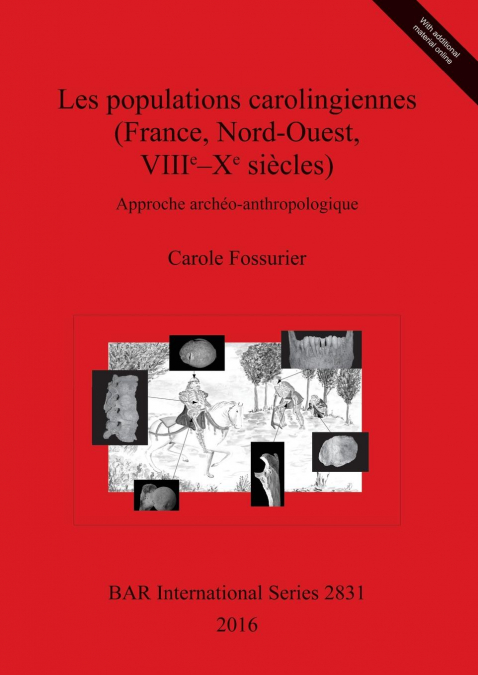
 Librería Desdémona
Librería Desdémona
 Librería Samer Atenea
Librería Samer Atenea
 Librería Aciertas (Toledo)
Librería Aciertas (Toledo)
 Kálamo Books
Kálamo Books
 Librería Perelló (Valencia)
Librería Perelló (Valencia)
 Librería Elías (Asturias)
Librería Elías (Asturias)
 Donde los libros
Donde los libros
 Librería Kolima (Madrid)
Librería Kolima (Madrid)
 Librería Proteo (Málaga)
Librería Proteo (Málaga)
Les populations des VIIIe-Xe siècles du nord-ouest de la France peuvent être analysées grâce à l'étude de leurs ossements. Pour ceci, la mise en pratique de l'anthropologie biologique (sexe, âge, santé, activité) nécessite une méthodologie rigoureuse et des critères nettement définis détaillés ici. La mise au point de nouvelles méthodes permettant des analyses spécifiques aux informations recherchées est proposée. Les sites archéologiques du corpus correspondent à des situations variées du point de vue de l'environnement et la topographie religieuse. La détermination de leur recrutement mais aussi l'étude de leur état sanitaire et de leur niveau d'activité donne la possibilité de les caractériser et de proposer des hypothèses sur leur nature. Ces données, confrontées aux études menées d'après les sources écrites et archéologiques, donnent alors une image précise des populations carolingiennes, permettent de comparer les divers ensembles funéraires et illustrent ainsi la grande variété mais aussi la hiérarchisation partielle des groupes populationnels carolingiens.The 8th to 10th century populations of the north-west of France can be better understood through the analysis of human remains. If biological anthropology is to be used for this purpose (to determine sex, age, health and activity level), it needs a rigorous methodology and clearly defined standards. The development of new methods of analysis specific to the research data is proposed in this volume. The archaeological sites of the corpus correspond to a variety of environmental, topographical and cultural contexts. Analysis of the selection (or acceptance) of individuals for burial at these sites and the study of their state of health and level of activity makes it possible to characterise the populations, and to suggest hypotheses about their origins. These methods, in comparison with studies of archaeological and written sources, can thus grant us a clear picture of Carolingian populations. The data allow us to compare various burial situations and thus to illustrate the large variety, but also the partially hierarchical organisation, of Carolingian population groups.